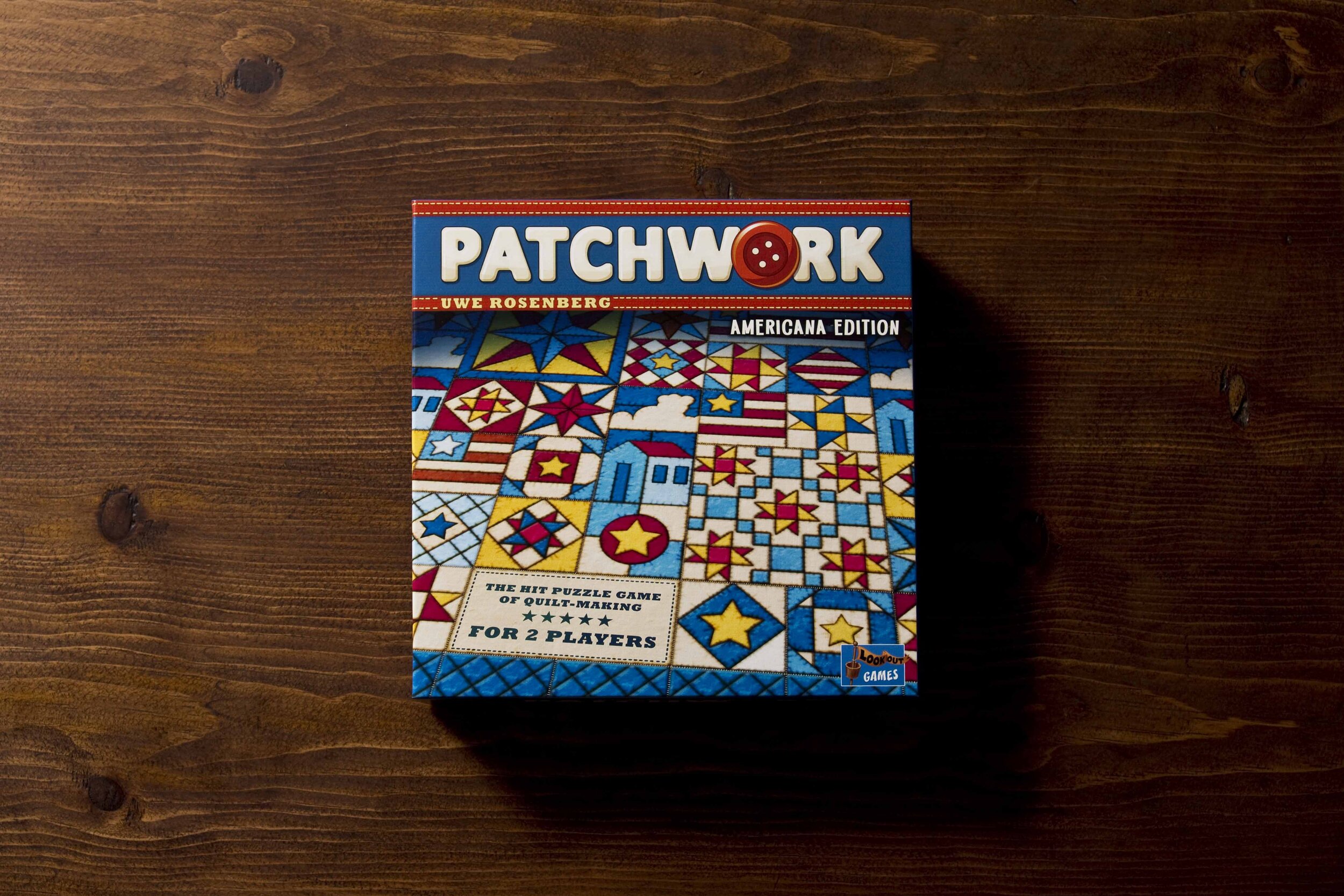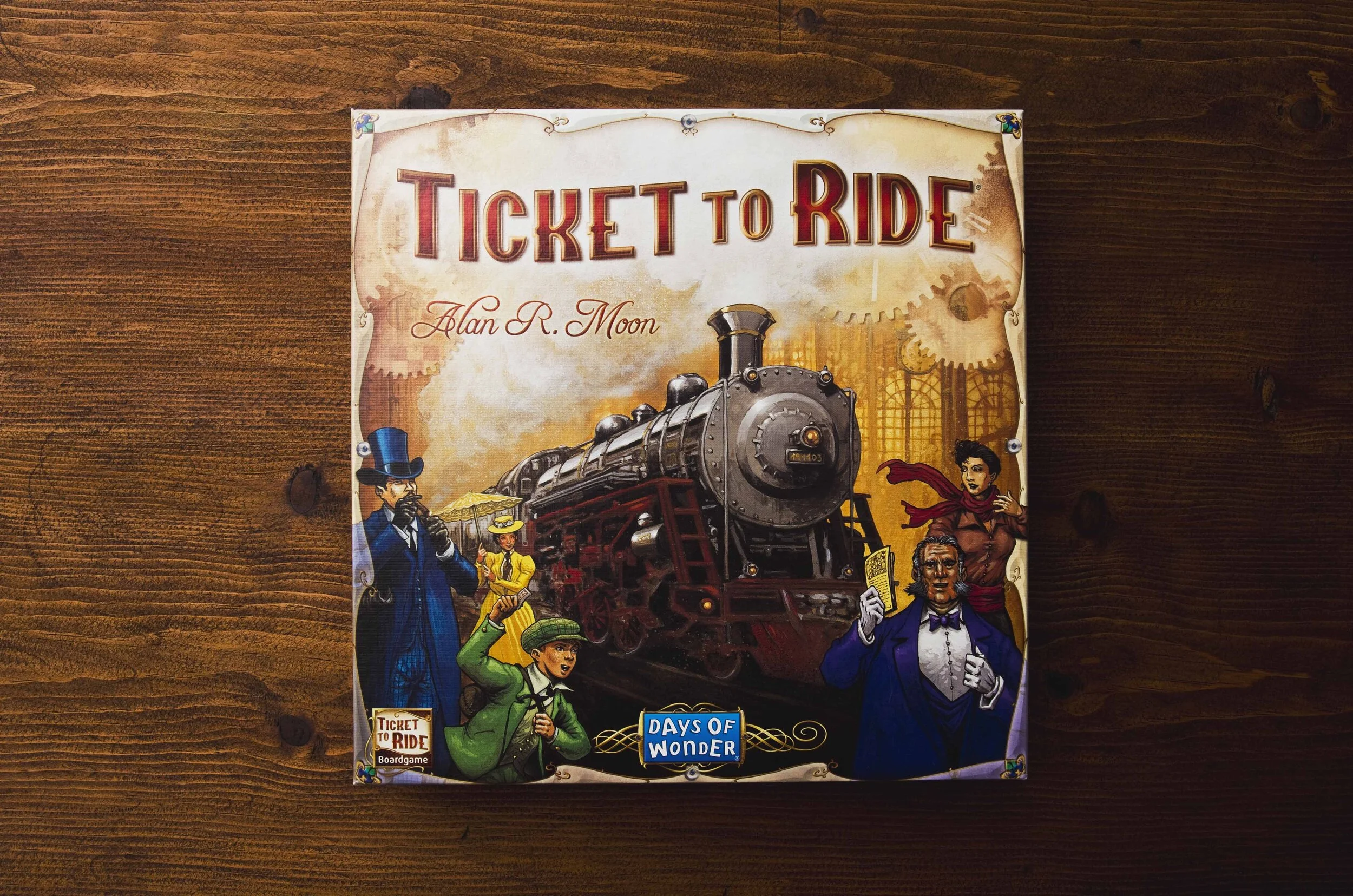Patchwork: Threading A Classic
The 2-Player gem You Should Have in Your Library
Box Art Americana Edition
Published by: Lookout Games /Mayfair Games Created by: Uwe Rosenberg
Back in the days, my wife and I happened to chance a visit to our area’s first local board game café. Well, it’s much less a café and much more a mac & cheese establishment. You could have truffle mac & cheese with sautéed onions and mushrooms, mac & cheese with pulled pork and a splash of BBQ, mac & cheese balls drizzled in guava sauce, or just go with a classic version of the comforting ooze of creamy cheddar smothered over gentle curves of macaroni. Pure delight.
We were regulars after that.
We ate there, played games over pints, and had a merry time, and as we developed a fondness for a turophile’s homely dish, we slowly started to gravitate towards a certain 2-player game full of wicked shapes and colors eschewing the plethora of board games at our disposal. Maybe it was the Tetris-like thought process needed to win, or the funky jagged pieces wanting to be locked in curious ways, or just the satisfying development of colorful cardboard growing before us.
Whatever it was, Patchwork became as integral to our dining experience as the mac & cheese itself. Maybe you should consider it as well, and here’s why.
Polyominos, polyominos, polyominos
Patchwork is a spatial puzzle with polyomino-shaped pieces that must be placed together into a 9x9 grid. At its core, the mechanisms here are dead simple: pick a piece from the rondel, place it on your board and try to cover as much of the empty space on it. Nuts and bolts, that’s the gist of it (sort of). Get enough of the buttons used as currency and survive the culling that happens at the end of the game over your opponent and claim victory.
Player Boards and Time Track
If you’ve ever played Tetris, and there is a high chance you have, this “fill up negative space and win” sort of mechanism shouldn’t be foreign to you. The shapes used here should be familiar as they employ the same blocky, right-angled bits, albeit with more outlandish designs. However, while the thrill of Tetris is the ever increasing speed at which polyominos come down whilst you interlock them into place, Patchwork instead is threaded throughout by an ingenious mélange of variety, economy and time. To succeed you must manage those three interwoven aspects of the game—a careful balancing act.
Let’s start with what is most important here—space, or rather the negativity of that wide open swath of squares on your board. The more open spaces unfilled by jagged little pieces of cardboard shapes, the more it will hurt you economically, throughout and by the end of the game. You see, by game’s end you’ll want to have as much of your board covered by patches. Any empty space left over once your time marker crosses the finish line is counted against you, and must be paid in one of the game’s two currencies, the buttons.
So fill up as much as you can, you say. Well, yes in concept, but the game has a few things that keep you in check of your grand design of covering every square with a patch—mainly every piece taken has a cost, both in buttons (the currency) and in time (the hourglass). Each patch has an associated amount of buttons you need to pay, as well as an increment of “time” you must move on the central time track. The economy of both those currencies is what sets this game above a simple pick and place. There are considerations to be made, and each one an implication on how good, bad, or meh your board comes out in the end.
Game Tokens and Marker
Each patch is also not available at a whim. In fact, there is a restriction of what you can spend your hard earned buttons on. You see, all 33 pieces of patches have to be placed in a rondel, a loop of haphazard morsels of quilt, and then a single marker sets what’s available for purchase. Whatever three pieces are ahead of this marker, in clockwise order, is what’s available. Want a piece that’s truly terrific for your board state but is just out of reach from the marker? Too bad. Your quilt is trash for now. You must then hope that whatever is available works to your advantage and fits within your budget. Pieces can range in price, from 0 to 10 and everything in between, as well as range in time that must be given, again ranging from 1-6 and everything in between. You’ll see these costs neatly displayed on all patches.
Once you’ve chosen what you want on your board, simply pick it up, pay its cost in buttons and move up the time track. So then you wonder, if patches cost buttons, then how do I get more buttons for future patches? Yes, how do you?
An Elephant through a Needle’s Eye
Buttons And Time
If it weren’t enough to think about what piece fits best on your board, the other aspect of Patchwork is its button economy. All of the pieces include the aforementioned cost and time you must pay, but as a bonus particular pieces also include buttons (not to be confused with the cost of a patch). These extra buttons permit you to collect the currency needed to buy pieces. There are specific button icons on the time track, which once crossed by your token allow you to collect buttons equal to the ones on your patches on your board. This little extra mechanism adds a new layer of particular thought as to what exactly is the best piece to take on your turn.
Then on top of that, consider how the pieces here interlock with each other. No two pieces are alike (aside from two) in Patchwork. There are no sets of patches that will form neat blocks. Each weirdly shaped patch is an adventure in spatial recognition of what it will fulfill on your board—or might be necessary to accept its dissonance in order to obtain more buttons for your important economy.
In other words, all your choices are important. Those colorful, weird shaped pieces are loaded with potential knots and heavy burdens. Should you take that cheap piece that will tuck nicely in that corner of empty space? Or, should you spend a little more to get the ugly, jagged piece that has three buttons on display for your economy but will unravel any balance by jutting out a few squares in an ungodly fashion? Or should you buy the one critical piece your opponent needs letting them waddle in despair on how to patch that hole meant for the piece you swiped away? You see where I’m going?
Patchwork is a masterclass on how to create tension with simple mechanisms intertwined deliberately for mass effect. One wrong calculation can send your board out of whack with a slatternly bramble of uncouth holes, edges with no clear ways to plug them neatly, and negative spaces that will take some brain power to fill. It truly is a devious little gem of a game hidden under a theme so quaint you wouldn’t expect it to have such prickly needle work.
A Quilt for Generations
All The Pieces
I can tell you, Patchwork is a classic. It’s an ingenious little game that packs a wallop of decisions. It plays fast, and with expert players, it can be cutthroat. I also like it for its table presence. The original version has a rainbow of patches that makes a finished board look attractive. What you’ve seen here in pictures is the Americana Edition. Although a simplified color scheme, the game still looks appealing after a successful (and rare) completed board.
Should you get this game? Absolutely. It’s a Uwe Rosenberg title we’ll still be talking about in the future. A dream of a game to gift to non-gamers, as the rules to learn are pretty simple to understand. Yet, with a straightforward 10 minute teach, the depth of Patchwork is outright devious. You can definitely get sucked in wondering if one particular patch at your disposal is the right patch for your progress—and other permutations that will go inside your mind, deciphering the absolute best choices two, three, five moves ahead.
In my book, this is a game that will never leave my game library, and maybe you should consider that too.












